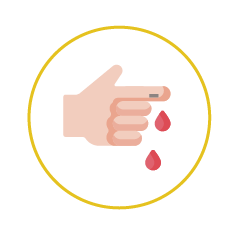A space contaminated by rat droppings and urine is a very dangerous place for human health, being classified as a biological risk and a source of transmission of various infections and diseases, many of them fatal. Murines (rats and mice) can transmit pathogens directly, through biting, or indirectly by contaminating water, food or surfaces with feces and urine or even through aerosols.


Immediately after disinfecting the affected area and completely controlling the pest, cleaning and disinfecting the contaminated space, as well as removing all objects damaged by rats, is mandatory to ensure its safety.
RATS: RISKS TO HUMAN HEALTH

Rats represent a serious public health problem, they are part of an epidemiological chain with the capacity to transmit around 200 diseases. There are several ways to contract them:

Through inhalation or direct contact with feces, urine or even rodent saliva.

Through direct contact with various objects contaminated by rodent urine.

By inhaling aerosolized particles during cleaning of waste sites.

Through direct physical contact with infected rodents (rats and mice).

Through rodent bites, with direct contact with their saliva.

Through wounds or scratches caused by direct contact with infected rodents.

By ingesting water or food contaminated by infected murines.

Through ectoparasites infected by rats with various pathogens.

Through domestic dogs and cats that have ingested an infected rodent.

Rodents act as hosts for several diseases transmitted by insects.
TRANSMITTED DISEASES AND INFECTIONS

Leptospirosis
It is the infectious disease known as “rat disease”, caused by bacteria of the genus Leptospira, which can be transmitted through contact with the urine and excrement of rodents, which enter humans through mucous membranes, skin lesions or even through ingestion. If this disease is not detected in time, it can lead to death.
Leptospirosis
Salmonellosis
Salmonellosis is an infection caused by the bacteria Salmonella spp. This bacteria can be transmitted through direct contact with rodents or through food contaminated by rat urine, saliva or droppings. It affects children and the elderly more, being contagious and leading to typical symptoms of gastroenteritis.
Salmonellosis
Bubonic plague
Known as the Black Death or “rat fever”, this is one of the oldest diseases and is transmitted by the bite of the rat flea, infected by the bacteria Yersinia pestis. It is currently still a worrying disease, as it can lead to death, both in people and animals, with more than 60% of untreated people dying within a few days.
Bubonic plague
Rat bite fever
It is transmitted by the bite or scratch of a rodent, when it is infected with the bacteria. Streptobacillus moniliformis. It is also transmitted indirectly by ingesting water or food infected by rat saliva or droppings. Symptoms include fever, vomiting and muscle pain.
Rat bite fever
Hantavirus
Hantavirus is a serious infectious disease transmitted by Hantavirus, found in the feces, urine and saliva of rodents, which can be fatal if left untreated. This infection occurs through the inhalation of virus particles suspended in the air in places where rat droppings are present, increasing the risk when cleaning.
Hantavirus
Scabies and allergies
Direct contact with rodents or even their own fur can cause mange and allergies. Rats, known as urban pests because they reproduce very quickly, transmit several diseases to humans and are therefore considered in the literature as a serious threat to public health.
Scabies and Allergies
TRANSMITTED DISEASES AND INFECTIONS

House Mouse
The domestic mouse is the most “friendly” species, reaching an average length of 9 cm, with large ears and delicate fur. They are usually nocturnal, have a limited range of action and can live in any area. Their diet consists mainly of cereals and they can survive long periods without any water. They are skilled climbers.
House Mouse
(Mus domesticus)
Common Rat
The rat, also known as the sewer rat, is the most aggressive of the species and the largest, reaching up to 50 cm in length, including the body and tail. It has small ears and rough skin, which is grey to brown in colour. It is generally found in sewers, in damp, warm and dark spaces, as well as in places where there is organic waste (garbage).
Common Rat
(Rattus norvegicus)
Black Rat
The black rat, also known as the black or roof rat, is usually found on roofs or in tall buildings, and has the ability to climb walls and enter houses with ease. It can reach 20 cm in length, and has large ears and a pointed nose. It is found in urban areas, in attics, warehouses and especially in port areas.
Black Rat
(Rattus rattus)
OUR WORK

 After
After
 Before
Before
 After
After
 Before
Before
 After
After
 Before
Before
DEATHCLEAN INTERVENTION

Requesting the intervention of a specialized, certified and legalized company such as DEATHCLEAN®, you will be ensuring your safety and the correct disinfection of all contaminated areas.

ANALYSIS AND PLANNING
We carry out a careful inspection of the entire space to mark all contaminated areas, ensuring that no trace is left behind.

CERTIFIED TECHNICIANS
We have techniques, equipment and products, as well as qualified teams that guarantee the removal of all waste and urine present on site.

CARCASS REMOVAL
We collect all dead rat carcasses, placing them in hermetic and resistant containers, in compliance with current legislation.

CLEANING AND DISINFECTION
We disinfect all surfaces using high-level disinfectants, certified to combat all pathogenic microorganisms.

WASTE REMOVAL
We are responsible for removing all waste and contaminated objects, sending them to a licensed operator for destruction.

CERTIFICATION
At the end, we issue a disinfection certificate, with legal validity, guaranteeing that the place was free from any type of contamination.
OUR WORK

RELATED SERVICES

CLEANING RAT URINE AND WASTE
A space contaminated by rat droppings and urine is a very dangerous place for human health, being classified as a biological risk and a source of transmission of various infections and diseases, many of them fatal. Murines (rats and mice) can transmit pathogens directly, through biting, or indirectly by contaminating water, food or surfaces with feces and urine or even through aerosols.
Immediately after disinfecting the affected area and completely controlling the pest, cleaning and disinfecting the contaminated space, as well as removing all objects damaged by rats, is mandatory to ensure its safety.
THE DEATHCLEAN® specialized in this type of intervention, obtaining international accreditation in this area, being the only certified company in Portugal, thus guaranteeing the correct and legal disinfection of spaces contaminated by mice or rats, a service called Post-Pest Disinfection.
Cleaning and disinfecting places contaminated by pests such as rodents requires specialized intervention to ensure the safety of the space again. DEATHCLEAN® carries out the disinfection service using high-level disinfectants, removing waste and urine, as well as rodent carcasses, with their legal destination being incineration (fines will be applied if placed in urban solid waste containers).

RATS: RISKS TO HUMAN HEALTH
Rats represent a serious public health problem, they are part of an epidemiological chain with the capacity to transmit around 200 diseases. There are several ways to contract them:

Through inhalation or direct contact with feces, urine or even rodent saliva.

Through direct contact with various objects contaminated by rodent urine.

By inhaling aerosolized particles during cleaning of waste sites.

Through direct physical contact with infected rodents (rats and mice).

Through rodent bites, with direct contact with their saliva.

Through wounds or scratches caused by direct contact with infected rodents.

By ingesting water or food contaminated by infected murines.

Through ectoparasites infected by rats with various pathogens.

Through domestic dogs and cats that have ingested an infected rodent.

Rodents act as hosts for several diseases transmitted by insects.
DISEASES AND INFECTIONS TRANSMITTED BY RATS
All places where rodents, their waste and urine are present are considered to be at biological risk, putting human health at risk, resulting in serious infections and diseases, such as:
Leptospirosis
It is the infectious disease known as “rat disease”, caused by bacteria of the genus Leptospira, which can be transmitted through contact with the urine and excrement of rodents, which enter humans through mucous membranes, skin lesions or even through ingestion. If this disease is not detected in time, it can lead to death.
Leptospirosis
Salmonellosis
Salmonellosis is an infection caused by the bacteria Salmonella spp. This bacteria can be transmitted through direct contact with rodents or through food contaminated by rat urine, saliva or droppings. It affects children and the elderly more, being contagious and leading to typical symptoms of gastroenteritis.
Salmonellosis
Bubonic plague
Known as the Black Death or “rat fever”, this is one of the oldest diseases and is transmitted by the bite of the rat flea, infected by the bacteria Yersinia pestis. It is currently still a worrying disease, as it can lead to death, both in people and animals, with more than 60% of untreated people dying within a few days.
Bubonic plague
Rat bite fever
It is transmitted by the bite or scratch of a rodent, when it is infected with the bacteria. Streptobacillus moniliformis. It is also transmitted indirectly by ingesting water or food infected by rat saliva or droppings. Symptoms include fever, vomiting and muscle pain.
Rat bite fever
Hantavirus
Hantavirus is a serious infectious disease transmitted by Hantavirus, found in the feces, urine and saliva of rodents, which can be fatal if left untreated. This infection occurs through the inhalation of virus particles suspended in the air in places where rat droppings are present, increasing the risk when cleaning.
Hantavirus
Scabies and allergies
Direct contact with rodents or even their own fur can cause mange and allergies. Rats, known as urban pests because they reproduce very quickly, transmit several diseases to humans and are therefore considered in the literature as a serious threat to public health.
Scabies and Allergies
THE DIFFERENT SPECIES OF RATS AND MICE
There are several types of commensal rodents in Portugal that pose a threat due to their ability to adapt to the human environment. We highlight the following three species:
Common rat
The rat, also known as the sewer rat, is the most aggressive of the species and the largest, reaching up to 50 cm in length, including the body and tail. It has small ears and rough skin, which is grey to brown in colour. It is generally found in sewers, in damp, warm and dark spaces, as well as in places where there is organic waste (garbage).
Common Rat
(Rattus norvegicus)
Black Rat
The black rat, also known as the black or roof rat, is usually found on roofs or in tall buildings, and has the ability to climb walls and enter houses with ease. It can reach 20 cm in length, and has large ears and a pointed nose. It is found in urban areas, in attics, warehouses and especially in port areas.
Black Rat
(Rattus rattus)
House Mouse
The domestic mouse is the most “friendly” species, reaching an average length of 9 cm, with large ears and delicate fur. They are usually nocturnal, have a limited range of action and can live in any area. Their diet consists mainly of cereals and they can survive long periods without any water. They are skilled climbers.
House Mouse
(Mus domesticus)
Our work
 After
After
 Before
Before
 After
After
 Before
Before
DEATHCLEAN INTERVENTION
Requesting the intervention of a specialized, certified and legalized company such as DEATHCLEAN®, you will be ensuring your safety and the correct disinfection of all contaminated areas.

ANALYSIS AND PLANNING
We carry out a careful inspection of the entire space to mark all contaminated areas, ensuring that no trace is left behind.

CERTIFIED TECHNICIANS
We have techniques, equipment and products, as well as qualified teams that guarantee the removal of all waste and urine present on site.

CARCASS REMOVAL
We collect all dead rat carcasses, placing them in hermetic and resistant containers, in compliance with current legislation.

CLEANING AND DISINFECTION
We disinfect all surfaces using high-level disinfectants, certified to combat all pathogenic microorganisms.

WASTE REMOVAL
We are responsible for removing all waste and contaminated objects, sending them to a licensed operator for destruction.

CERTIFICATION
At the end, we issue a disinfection certificate, with legal validity, guaranteeing that the place was free from any type of contamination.
Before DeathClean

After DeathClean

OUR WORK
RELATED SERVICES
















